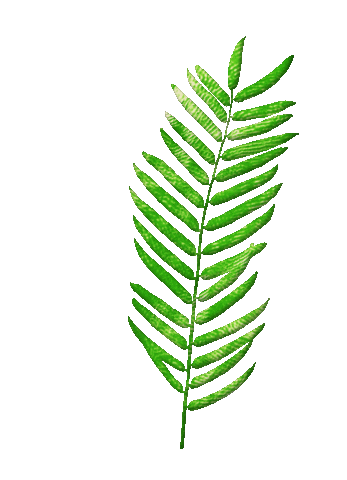top of page
Piper in the Woods
15th May - 15th June 2020
John Butler, Stine Deja, Emily Mulenga, Tamsin Snow and Petra Szemán
Curated by Bob Bicknell-Knight
An exhibition of works responding somewhat to the current global pandemic, Piper in the Woods contains a number of artworks from artists predominantly working with digital media, that explore the idea of the simulated, virtual space, both escaping to and being trapped within this endless, and somewhat unknown, environment. The works in the show look to the future, reflecting upon how the increasingly virtual and automated world impacts and will continue to impact our daily lives.
Piper in the Woods takes its title from the 1953 short story of the same name by Philip K Dick. The story sees the protagonist, army doctor Henry Harris, examining the mental health of several soldiers who, after travelling to a remote asteroid, return to Earth believing that they have transformed into plants. Rather than working, they now spend their time sitting in the sun, philosophising about how work, and particularly space travel, is unnecessary. You are encouraged to read the short story, which is available on the left side of the screen throughout the exhibition space. The works in the exhibition are placed outside of the confines of the stereotypical web page, inviting the viewer to journey into the white space, mimicking the soldiers deviation from the norm and into the unknown forest.
Within the exhibition five videos and one sound work are presented. Stine Deja's video Thermal Womb: 27.09.2019 (2019 - 20) is present throughout the exhibition, manifesting as an upside-down elderly figures eyes, occasionally blinking and watching the viewer. Accompanying the video is Deja’s looping sound work Last Resort (2020). Both pieces are part of a large body of ongoing, research heavy work by Deja, concerning cryopreservation and transhumanism. Cryopreservation is the process of cooling and storing cells, tissues or organs at very low temperatures to maintain their on-going viability. Preserved with the intention to restore and unfreeze the (in many cases) bodies once science creates the technology that enables that to happen. The video and sound work are part of a larger installation and solo show, titled Last Resort, that featured multiple full scale bodies, wrapped upside down in thermal sleeping bags and placed inside specially made metal cabinets, mimicking the same process that real bodies go through when being cryopreserved.
Another work that investigates cryogenics is Tamsin Snow’s Showroom (2017), which speculatively explores the relationship between science fiction-esque architecture with present day medical spaces. The video is a montage composed largely of stock footage and juxtaposes existing free and bought architectural models with imagined and built virtual environments. The animation looks at the material structure of digital video and the technological possibilities of new media. The reality of artificial intelligence, suspended animation, and developments in synthetic biology, have sparked debate across disciplines. Showroom explores the question of morphological freedom and the possible impacts these technologies may have for our future selves.
John Butler’s The Dependency Loop (2018) is one of many of Butler’s intricately crafted animations, considering how the automation of work will shape our collective future. In this piece Butler is concerned with the concept of bio-fracking, whereby a person’s body is re-purposed as an engine of productivity. With minor modifications, the body becomes an abundant and infinitely flexible resource, reborn as a bio-manufacturing facility. As the use of artificially intelligent devices becomes mainstream, our complex bodies will become far more important and revered than our minds.
In Emily Mulenga’s Orange Bikini (2015) the viewer is taken on a sensory experience of an online metaverse (a collective virtual shared space) crafted by the artist, filled with imagery of drifting clouds and glittering starbursts. Navigating the pixilated landscape alone, the piece centres on Mulenga’s fantasy persona performing in different capacities – taking a selfie, singing, pole dancing, twerking, or riding a dolphin naked. Viewers enter the ethereal journey into indoor and outdoor spaces that transition through superimposed scenes with transparent overlays. The video’s dreamy quality is intensified by these transitions, moving from an infinite field of flowers through an empty galactic space, into a layer of clouds, and then landing in an adolescent pink bedroom. A range of sounds and songs, including a high-pitched clip of Khia’s ‘My Neck, My Back’ as well as electronic funk, enable these transitions while facilitating the playfulness of the piece. The work is a celebration of virtual and digital space, alongside Mulenga affirming her own independence and power to celebrate beauty without the male gaze.
The final work in the exhibition is Petra Szemán’s Monomyth: gaiden / Departure (2018), the first of a four part series of videos which explores the Szemán’s relationship to their digital avatar Yourself, as well as the processes involved in the creation of a multi-layered image world. As a self-aware protagonist moving along the frayed edges of fictional and real worlds shaped by narrative traditions, Yourself attempts to navigate landscapes that have become oversaturated with movies and fiction. Through the disentangling of these realms comes an assessment of ideas of a singular truth, and an attempt to pinpoint the shifts and discrepancies in a linear personal narrative that arise when journeying through an elusive multiplanar reality. Structured as the first part of the hero’s journey trope, the video investigates how real life might be experienced as a film.
bottom of page

